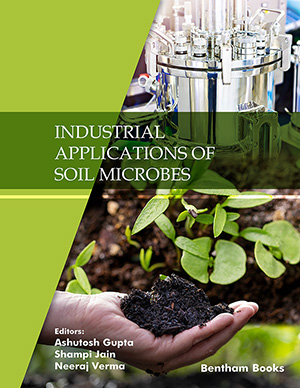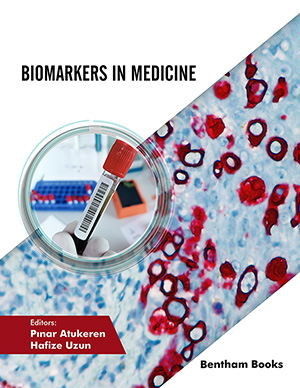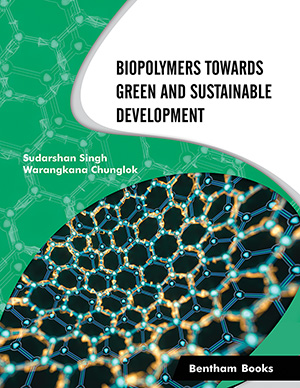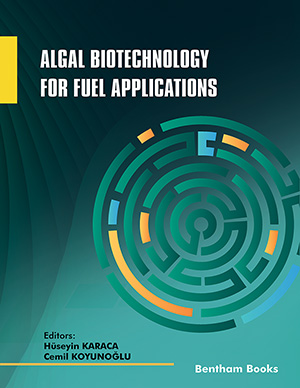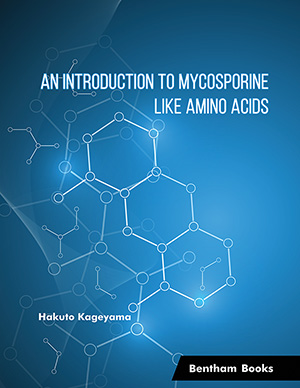Preface
Page: ii-iv (3)
Author: S. Gowrishankar, Hamidah Ibrahim, A. Veena, K. P. Asha Rani and A. H. Srinivasa
DOI: 10.2174/9789815196177124010002
Digital Twin for Smart Farming
Page: 1-16 (16)
Author: Galiveeti Poornima*, Deepak S. Sakkari and Sukruth Gowda M.A.
DOI: 10.2174/9789815196177124010004
PDF Price: $15
Abstract
One of the disruptive technologies that will emerge in the 21st century is the
digital twin, which is a digital copy of any physical object that may exist in any setting.
Many industries heavily rely on digital twin technology to produce high-quality
products that can be shipped throughout the world with no loss in efficiency. The initial
efforts have been made by the agricultural sector toward the implementation of digital
twin technology in farming and other types of activities. It has already begun to apply
vertical farming together with other crucial cutting-edge technologies in a chosen
number of smart cities.
Deep Learning Models for Prediction of Disease in Lycopersicum
Page: 17-24 (8)
Author: Nakatha Arun Kumar* and Sathish S. Kumar
DOI: 10.2174/9789815196177124010005
PDF Price: $15
Abstract
In the Indian economy, agriculture is one of the main economic resources.
Unemployment is one of the biggest problems. In many areas, agriculture offers about
60% of jobs. Various roles and responsibilities are involved in the agricultural sector
including farmers, farm equipment operators, technical specialists, and more. There are
a number of opportunities available in the agricultural sector. In developing countries,
unemployment has decreased significantly since agriculture accounts for 20% of GDP,
and agriculture can yield much greater benefits. Crops are classified into commercial
and non-commercial crops. Most people can access and use non-commercial crops in
their daily lives. Tomatoes are considered non-commercial crop. The edible berry of
the species, Solanum lycopersicum, is commonly known as the tomato plant. Tomato
plants are affected by many different diseases and because of these diseases, the losses
are heavy. The disease can affect leaf, stem, or tomatoes. Initially, the disease is
observed in the leaves, and eventually the disease worsens. Anticipating disease at an
early stage is a major concern and therefore preventive measures are taken to obtain
good crop quantity and quality. Applying deep learning techniques to disease detection
has many advantages over other machine learning techniques. Deep learning is a part
of machine learning techniques that helps train computers to do things that are natural
to humans.
A Smart Hydroponics System for Sustainable Agriculture
Page: 25-47 (23)
Author: Supriya Jaiswal*, Gopal Rawat, Chetan Khadse and Sohit Sharma
DOI: 10.2174/9789815196177124010006
PDF Price: $15
Abstract
The agriculture sector not only contributes to the nation's economy but also
serves as an important element in foreign exchange and trade markets. With the
advancement in technology, robots, drones, satellite imagining, IoT, wireless sensor
networks, machine learning, big data analytics, and unmanned aerial vehicles (UAV)
are being deployed to manage, monitor and control agricultural chores. However, the
farmers are unable to meet the increasing urban food demand with limited cultivable
land availability. Thus, to solve this issue, hydroponic farming is opted for in several
parts of the world. It is a soil-free and nutrient-rich water medium for agriculture,
which is increasingly opted for by the urban population. Hydroponic farming has been
vastly explored in the context of urban farming, where land, water, time, and labour are
required in a limited amount, yet productivity is far better compared to traditional
agricultural methods.
It has been recently adopted in urban sections in India due to restricted movement in
COVID-19 pandemic situations to fulfil basic food requirements. However, hydroponic
farming has shortcomings such as higher initial cost, the possibility of complex nutrient
discharge problems, the energy requirement for the creation of microclimatic
conditions, fertigation and effluent treatment and pretrained skilled labour. In order to
resolve these issues, a smart hydroponic farming architecture is discussed, which
reduces human intervention and water wastage using wireless sensor networks and IoT.
In order to successfully and efficiently implement the agricultural supply chain,
machine learning algorithms and data mining techniques are utilized from the
production to inventory storage stage. The following sections deal with a brief
introduction to hydroponic farming, its architecture and components, and future
opportunities regarding the field of automated hydroponic farming.
Agriculture Robotics
Page: 48-79 (32)
Author: Bogala Mallikharjuna Reddy*
DOI: 10.2174/9789815196177124010007
PDF Price: $15
Abstract
In an agriculture-based society, where sustainable farming operations are
required, quantitative field status and plant-by-plant monitoring may benefit all
cultivators by enhancing farmland management. Sensing technology, artificial
intelligence, autonomous robotics, and computerized data analytics will be important.
In this book chapter, the essential features of using robotics in agriculture are
presented; namely, the primary reasons for the automation of agriculture, the role of
robotics in agriculture, its classification, evolution, and consideration of autonomous
navigation for commercial agricultural robots, currently existing models of agriculture
robots and their comparison, the potential benefits and limitations of agriculture
robotics, gathering of massive data and using data science approaches for improving
the food productivity and its influence on boosting the agriculture industry. The current
study focuses on the adoption of agriculture robotics in the farming sector for various
purposes (from land preparation to harvesting). The application of agriculture robotics
for food production can favor the incorporation of agricultural robotics companies to
minimize labor costs and food shortages. Furthermore, agriculture robotics can be the
catalyst for new sources of information on the environmental impact (agroecological
footprint) of the local food production chain.
Internet of Green Things (IoGT) for Carbon-Free Economy
Page: 80-109 (30)
Author: Sadiq Mohammed Sanusi*, Singh Invinder Paul and Ahmad Muhammad Makarfi
DOI: 10.2174/9789815196177124010008
PDF Price: $15
Abstract
War, pollution, and a plethora of other threats are prevailing in the world on
a daily basis. The globe, which has a population of more than 7.3 billion, is constantly
harmed by human activity. Climate change is one of the world's most lethal problems
because of these severe deformations. UN reported that 10000 people have died in
extreme weather events like fire and floods in the past two years. Globally, $280 billion
is lost to climate catastrophes from 2021 to 2022. While a single action won't be able to
stop or slow down climate change, many tiny contributions from several professions
will help it have an emotional effect. Scientists from all over the world are looking for
ways to manage the transformation of the landscape in order to anticipate the dangers
of climate change and, if possible, to reduce their effects on the future of the earth.
Particularly with the Internet of Things (IoT), it is possible to slow the increase in
global temperatures and cut back on hothouse emigration. The Internet of Things (IoT)
encompasses more than just cutting-edge gadgets and intelligent machinery since it
affects the state of the planet, from its climate to its financial resources. If we use
technology effectively, it may be the instrument that saves the world. Since it involves
everything from monitoring ozone levels in a meat packing facility to keeping an eye
on public trees for banks, environmental monitoring is a broad activity for the Internet
of Things (IoT). These findings mark the beginning of the process of developing
several interconnected architectures that will support cutting-edge services and have
greater effectiveness and flexibility.
Revolutionizing Precision Agriculture Using Artificial Intelligence and Machine Learning
Page: 110-126 (17)
Author: Jayalakshmi Murugan*, Maharajan Kaliyanandi and Carmel Sobia M.
DOI: 10.2174/9789815196177124010009
PDF Price: $15
Abstract
Plant disease mechanization in the agricultural discipline is a major source
of concern for every country, since the world's population continues to grow at an
alarming rate, increasing the need for food. However, due to a scarcity of necessary
infrastructure in various parts of the world, it is difficult to identify them quickly in
some areas. In the context of the expanded use of technology, it is now feasible to
assess the efficiency and accuracy of methods for identifying illnesses in plants and
animals. It has recently been discovered that information technology-based tools,
technologies, and applications are effective and realistic measures for the improvement
of the whole agricultural field, spanning from scientific research to farmer assistance.
The integration of expert systems as a strong tool for stakeholders in agricultural
production has enormous promise, and it is now being explored. The suggested effort
begins with the collection of disease symptoms and environmental factors by
agriculture specialists and plant pathologists, who will then analyze the information
gathered. The corrective solution is then recommended to the end user by an expert
system, which is accessed through a mobile application. Computer application
consisting of an expertise base, inference engine, and a user interface is envisaged as
the machine of the future. Integrated inside the gadget is a structured expertise base that
contains information on the signs and treatments of various ailments. In order to
identify and diagnose plant disorders, the machine must first locate and diagnose the
condition. It is accomplished by the analysis of the symptoms of illness on the crop's
surface. On the basis of the yield and the surrounding environment, this symptom is
utilized to identify the illness and give an entirely unique diagnostic solution. The
computer will test the plants and their disordered lives inside the database and provide
a set of diagnostic levels in accordance with the condition that the plants are suffering
from, according to the database. Farmers may easily identify and manipulate plant
diseases with the help of the suggested technology, which is supported by a
sophisticated expert system.
Internet of Fisheries Things (IOFT) for Blue Economy & Ecosystem
Page: 127-162 (36)
Author: Sadiq Mohammed Sanusi*, Singh Invinder Paul and Ahmad Muhammad Makarfi
DOI: 10.2174/9789815196177124010010
PDF Price: $15
Abstract
The industry with the fastest global growth is aquaculture, particularly in
developing nations. Studies of control systems, automation, IoT, and artificial
intelligence are becoming more and more prevalent as a result of developments in
information technology and embedded systems in the digitalization era. The 4.0
industrial revolution, which promotes device connection via IoT and AI, is a result of
the swift advancement of science and technology. One of the key factors in the growth
of this revolution is IoT. The fourth industrial revolution is a shift from manual to
automated operations that rely on computer technology. The digitalization of all
industries, including fisheries and aquaculture, must be the first step in technological
advancement toward the usage of the Internet of Things (IoT) and Big Data. The
raising and catching of fish have undergone several changes as a result of digitization
in the fishing industry. The main benefits of digitizing fisheries are those related to
time, money, and labor efficiency. The procedure of digitizing aquaculture can be seen
from a variety of angles, including pre-production (locating cultivation sites using
GIS), production (improving resource efficiency by employing automatic feeders and
water quality testing equipment), and post-production (utilization of digital marketing).
Tea Rhizospheres and Their Functional Role in Tea Gardens
Page: 163-174 (12)
Author: Rwitabrata Mallick*
DOI: 10.2174/9789815196177124010011
PDF Price: $15
Abstract
Darjeeling tea (Camellia sinensis) is famous worldwide for its excellent
aroma and taste, and out of that, the best quality tea is produced in the Kurseong hill
area. A year-long analysis of soil samples collected from different sites was done by
applying the plate-count method in terms of colony-forming units for determining the
presence of microbial population within soils cultivating tea on a monthly basis.
Coordination in specific microbes might also be responsible for the impact. Fungi,
bacteria, and actinomycetes – these three groups of microbes were tested during the
process. Results showed that the neo tea plant, rhizosphere and rhizosphere of several
other perpetual plants of various ages, flourishing in age-old tea gardens, seemed to
expedite the growth of microbes. At present, the tea rhizosphere has been tested
thoroughly, specifically in relation to plant-microbe response. Counter to the common
outcomes, rhizosphere and soil ratios were found to be regularly less than 1 in samples
collected from age-old tea gardens, showing an overall -ve rhizosphere impact. The
finding of the 'negative rhizosphere effect' in old tea bushes is a significant and novel
nature of the tea rhizosphere. The -ve impact on the rhizosphere of aged tea bushes
does not seem to be a regular phenomenon that is related to the aging of plants
generally but might be distinctive particular to tea plants. Other important and
associated features include colonization of tea, rhizosphere, soil pH, etc. Supremacy of
a certain population of microbes, an affinity towards a section of general opponents
constitutes a good instance of reciprocated selection in the natural environment. These
discoveries have unlocked newer paths for extended research in the field of
'rhizosphere microbiology'. The present study is an attempt to evaluate the transforming
features coupled with the microbial activity and diversity in the tea rhizosphere and
significant implications in the tea industry.
Applications of Smart Farming Sensors: A Way Forward
Page: 175-193 (19)
Author: Prasenjit Pal* and Sandeep Poddar
DOI: 10.2174/9789815196177124010012
PDF Price: $15
Abstract
The introduction of sensing-based technology has transformed the
agriculture sector in many ways. This chapter explores the potential of sensing-based
technology, including big data and artificial intelligence, in agriculture to lower
production costs and increase yield efficiencies. The application of various sensors is
explained in various sectors of agriculture, like crop farming, animal farming, and fish
farming. This technology has the potential to automate farming and has the ability to
shift to precise cultivation for higher crop yields and better quality while using the
minimum resources. This chapter also elaborates on the different types of sensors used
in agriculture, their benefits, and related issues for their various applications. These
technologies have some real issues in the application, which need to be sorted out, and
more efforts should be made to make the product more cost effective, relevant, and
customized for the use of farmers.
An Overview of Building a Global Data Area on the Web for Farming
Page: 194-207 (14)
Author: R. Sapna*, Ravva Akash Guptha, Paritala Venkateswara Rao and Raavi Sai Pranay
DOI: 10.2174/9789815196177124010013
PDF Price: $15
Abstract
A collection of best practices for publishing as well as connecting structured
data on the Web is referred to as “Linked Data.” In the past ten years, the practice of
Linked Open Data has significantly increased the structured data available on the Web.
This structured data provides machine-readable descriptions of real-world items,
opening hitherto unheard-of opportunities for research around natural language
processing. With the aid of technology, the agriculture sector advanced significantly,
becoming more data-driven and intelligent. Studies on how these data can be used, for
what kinds of tasks, and to what degree they can be helpful for agricultural tasks,
however, are lacking. Our paper puts an effort into providing an overview of concepts
and technologies in the Semantic Web and their applicability to farming.
Subject Index
Page: 208-213 (6)
Author: S. Gowrishankar, Hamidah Ibrahim, A. Veena, K. P. Asha Rani and A. H. Srinivasa
DOI: 10.2174/9789815196177124010014
Introduction
Data Science for Agricultural Innovation and Productivity explores the transformation of agriculture through data-driven practices. This comprehensive book delves into the intersection of data science and farming, offering insights into the potential of big data analytics, machine learning, and IoT integration. Readers will find a wide range of topics covered in 10 chapters, including smart farming, AI applications, hydroponics, and robotics. Expert contributors, including researchers, practitioners, and academics in the fields of data science and agriculture, share their knowledge to provide readers with up-to-date insights and practical applications. The interdisciplinary emphasis of the book gives a well-rounded view of the subject. With real-world examples and case studies, this book demonstrates how data science is being successfully applied in agriculture, inspiring readers to explore new possibilities and contribute to the ongoing transformation of the agricultural sector. Sustainability and future outlook are the key themes, as the book explores how data science can promote environmentally conscious agricultural practices while addressing global food security concerns. Key Features: - Focus on data-driven agricultural practices - Comprehensive coverage of modern farming topics with an interdisciplinary perspective - Expert insights - Sustainability and future outlook -Highlights practical applications Data Science for Agricultural Innovation and Productivity is an essential resource for researchers, data scientists, farmers, agricultural technologists, students, educators, and anyone with an interest in the future of farming through data-driven agriculture.

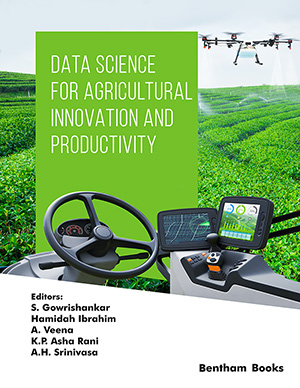





 Download PDF File
Download PDF File



